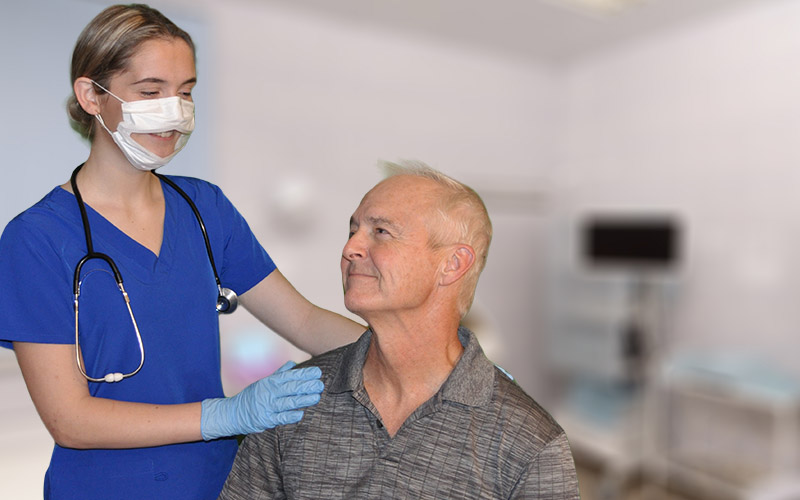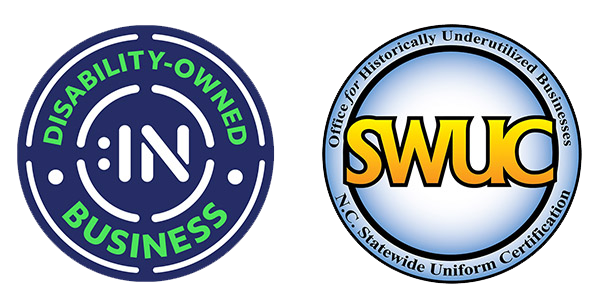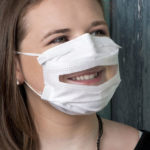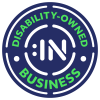Preparing Medical Service Providers for Treating Deaf & Hard of Hearing Patients
January 12, 2023 2023-03-08 16:57Preparing Medical Service Providers for Treating Deaf & Hard of Hearing Patients

Preparing Medical Service Providers for Treating Deaf & Hard of Hearing Patients
According to the Centers for Medicare and Medicaid, there are nearly 37.5 million adults who have reported some level of hearing loss. Among them, about 2 million individuals are deaf. By creating an inclusive environment, medical providers will be able to meet the needs of visual communicators as well as improve communication with patients who seek services.
Medical service providers need to provide reasonable accommodations for effective communication. The Americans with Disabilities Act (ADA) requires healthcare providers to offer communication aids and services to people with disabilities. Using available tools, like interpreters, transcription services, or medical masks that allow lip reading, can improve patient communication and understanding.

Before the appointment begins:
For providers, preparing to work with deaf and hard of hearing patients is essential and starts even before the appointment. When scheduling the appointment, ensure the provider understands how the patient prefers to communicate and whether the patient needs an interpreter. Additionally, once at the office, visible signs should display the most vital information.
During the appointment:
Additionally, reduce background noise and ensure the room is well-lit. The patient needs to see your face and any written information. A provider’s face is an essential communication tool. When possible, use The Communicator™ disposable face mask with window, which allows the patient to see lip movement when you are speaking. The provider should support what they say by using facial expressions, only improving comprehension. In addition, use other forms of communication like writing and signing. The goal is comprehension. As a provider, you need to be able to use all the tools available to you.
Overall, One of the biggest differences in treating patients who are deaf and hard-of-hearing is a lack of understanding about the needs of visual communication. By being thoughtful about the medical device tools available, a provider can help these patients avoid prolonged and unnecessary illnesses due to inadequate communication with healthcare providers. Minor changes to the communication protocols can create a more inclusive environment, helping more patients have better outcomes.
Tips for Communicating with Deaf Patients
- Use an interpreter, transcription service, or The Communicator™ anti fog face mask.
- Talk directly to your patient, not the person interpreting.
- Make sure you have your patient’s attention before talking.
- Maintain eye contact while communicating.
- Use normal lip movement volume and speed.
- Make sure the room is well lit
- Use gestures and facial expressions to help explain yourself.
- Point to parts of your body if necessary.
- Keep checking to make sure your patient understands you.
Sources:
12 tips for communicating with deaf patients. SignHealth. (2022, May 13). Retrieved January 9, 2023, from https://signhealth.org.uk/resources/learn-about-deafness/tips-for-communicating-with-deaf-patients/
ADA requirements – effective communication. ADA.gov. (2023, January 6). Retrieved January 9, 2023, from https://www.ada.gov/resources/effective-communication/
Centers for Medicare & Medicaid Services. (2022, August). Improving communication access for individuals who are deaf or hard of hearing. Retrieved January 9, 2023, from https://www.cms.gov/files/document/audio-sensory-disabilities-brochure-508c.pdf
Newton VE, Shah SR. Improving communication with patients with a hearing impairment. Community Eye Health. 2013;26(81):6-7. PMID: 23840079; PMCID: PMC3678307.
Learn more about The Communicator™
Ensuring that a patient’s medical issue is well-understood by the patient is key for any healthcare provider. Have more questions? Be sure to check out our frequently asked questions page. Be sure to sign up for our mailing list to receive the latest news, product updates, and promotional offers from Safe’N’Clear.
Purchase Online
Featured Deaf Leader
Recent Articles













